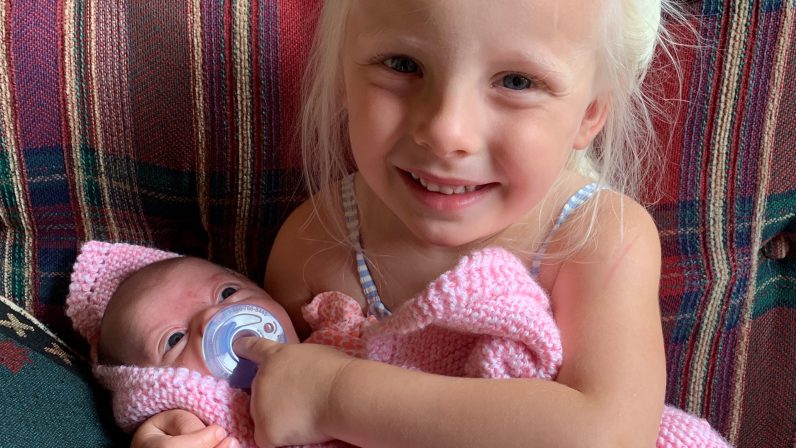In July we took my great-granddaughter to Minnesota to visit her great-great grandparents. Included in the mix of family present was my great-niece, Emmy. She’s a bright, articulate, curious girl, and was completely mesmerized by the baby. Being a typical four-year-old, she wanted to touch her new little cousin and find out all she could about her. We spent considerable time in conversation with Emmy explaining different things about the baby, and why it was important to hold her certain ways, keep our hands clean, and sometimes give her space. Emmy liked to be close to the action when we fed the baby or changed her diaper. With each aspect of care, we took time to explain what we were doing and why. She soaked it all in and, once she understood the expectations and reason for certain boundaries, respected them. When it was time for her turn to hold the baby, she was ready. I thought about Emmy when we returned home. Our interaction with her was a strong reminder of the significance of how we talk to children. Instead of telling her not to touch the baby, we took the time to talk with her, to answer questions, and give her jobs to be helpful.
For many years at the Seed we’ve refined the language we use with children in similar ways. We’ve practiced telling children what we want them to do (e.g. “Walking feet,” instead of “Stop running.”) instead of what they shouldn’t do. This past week I’ve made it into almost every classroom for a quick observation. Student engagement is high during these early days of the new school year, as is rich teacher language. Across the board I noticed teachers offering helpful comments such as: “Sometimes when I watercolor I like to use a paper towel to dry my brush off,” or “I can’t wait to see what you’re working on!” When trouble was a brewing between two young children who aren’t yet verbal, instead of telling them to stop doing what they were doing, a teacher offered an alternative activity and proactively said, “Let’s do this instead.”
Teacher eyes constantly scan the room, traversing that fine line between letting children work things out and intervening when necessary. In one class the teacher kept her eye on a child who tends to get physical in moments of frustration. The child was building a block tower and invited her teacher over to see it. In the time it took to get a camera to document the tower, a friend accidentally knocked it over. Uncertain what the response might be, the skillful teacher swooped in and asked the builder how that made her feel. Those brief words of acknowledgement, with a quick suggestion of rebuilding, averted an outburst. Well-crafted teacher language also gave the child a chance to learn perseverance as she built and rebuilt her tower.
One thing we’ve been working on as a staff for may years is avoiding saying “good job” or even language like: “I like how you did that.” Our intention is to say what we notice, pointing it out to children, so they can develop their own sense of pride in their work. In one class I noticed acknowledgement expressed this way: “I’m excited about what I’m seeing, raising hands if you need help, working quietly…” The teacher was expressing how she was feeling in response to observed behaviors, rather that offering direct praise.
Refinement of the language we use with children is a lifetime process. Each day we continue practicing what we believe is best for children. It takes time, patience, and presence. Working with this level of vigilance asks us to lean in closely, ask questions, and set aside our own agendas. When children are surrounded by adults who are present in this way, they feel safe, honored, and valued. They experience their voices being heard, which sets them up for a future of knowing they can speak up, for themselves or a friend who might need help.

